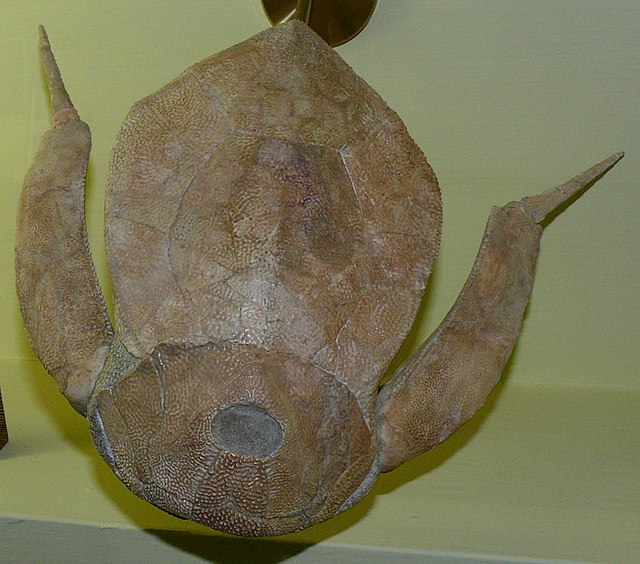Homosteus is a genus of flattened arthrodire placoderm from the Middle Devonian. Fossils are found primarily in Eifelian-epoch aged strata of Europe, Canada, Greenland, and Estonia. All of the species had comparatively large, flattened heads with, as suggested by the upward opening orbits, upward-pointing eyes. These adaptations suggest that the various species were benthic predators. A study on Titanichthys, in contrast, suggests that species of Homosteus may have been filter-feeders instead.
Homosteus
Placoderms are members of the class Placodermi, a group of prehistoric fish known from Paleozoic fossils which lived from the Silurian to the end of the Devonian period. While their endoskeletons are mainly cartilaginous, their head and thorax were covered by articulated armoured plates, and the rest of the body was scaled or naked depending on the species. Placoderms were among the first jawed fish; their jaws likely evolved from the first pair of gill arches.
Placoderm
Dunkleosteus, among the first of the vertebrate apex predators, was a giant armoured placoderm predator.
Amazichthys, a pelagic arthrodire from the Middle Famennian of the Late Devonian.
Fin spine of Eczematolepis, from the Middle Devonian of Wisconsin.





